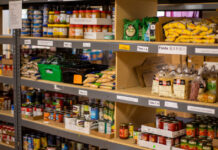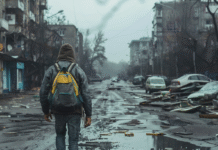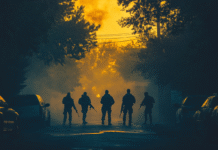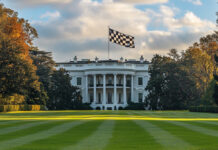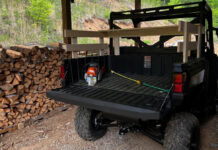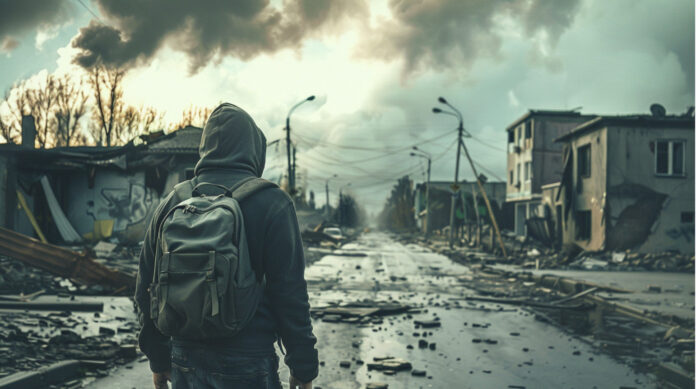
If you ever bothered to look under the About Us tab on this website, you’ll find a section called The Layer Approach to Prepping. I recommend you check it out, and maybe read Our Philosophy as well. If you skip it, well, just be aware that the layered approach uses concentric layers to provide redundancies and related capabilities.
A good example of the layered approach is seen in my EDC, or Every Day Carry.
My Inner Layer
Every time I get dressed in the morning, I put the following in my pockets or on my belt:
- Glock Pistol
- Spare magazine
- Knife
- Tactical Flashlight
- Primary key ring
- Secondary key ring
- Minimalist Wallet
- Money clip
- Cell phone
- Lighter
Depending on where I am going or what I am planning to do, I may:
- Carry a CAT tourniquet, if I have the pocket availability
- Add a .38 snubnose revolver and two speed loaders of +P ammo
- Leave one keychain home or put it in my EDC bag
- Strap on a fixed blade knife if an outdoor activity is planned
- Wear a money belt, if I expect to leave the property
- Stick a box cutter in my pocket if I plan to be doing utility work
I can carry all of this in any pair of pants and shirt, although if I am going out in public, I have to untuck my shirt or throw on a jacket or cover shirt to hide the Glock. If I am going in a non-permissive environment, I’ll leave the Glock in the car and carry my .38, which is well concealed.
Most and Least Used
If I had to rank these on what I use the most, the flashlight, phone, and wallet would be the top three, followed by my keys, money clip, and knife. I have never needed the lighter. In fact, I used to carry a refillable lighter, but the Zippo fluid dried out so often I switched to a disposable. Every few weeks, I flick the wheel on my disposable just to make sure it still ignites.
My two credit cards are in my phone, and because I carry a money clip, I don’t need a wallet. I carry one because other people may demand “my papers.” So it holds my driver’s license, concealed carry permit, health insurance card and a couple credit and ATM cards. My old wallet was filled with membership cards and gift cards, but I’ve gotten rid of most of them. The few I use, like my library card, are on now available in minimal versions that are on my secondary keyring.
Are my top 3 items the most important? They are now, while the rule of law still (mostly) exists, while credit cards still work, ATMs have cash, and my phone can access the network. The minute that changes, the gun, ammo, lighter and tourniquet become more important.
Similarly, the most important may depend on what you are doing. Going to town is a different EDC than climbing the mountain.
Off-Body EDC
Rather than carrying multiple small pouches on my belt, ankle, and slung over my shoulder, I carry a 25-liter day pack. I can carry this strapped to my back for a long walk or thrown over one shoulder, which looks more casual.
It has more or better/different varieties of what I am already carrying plus new items. This is where the redundancy and concentric circles come into play.
For example, my EDC bag includes the following, all of which duplicate or expand on stuff I carry on my person:
- A second folding knife
- A multi tool
- Two additional pistol magazines, one of which holds 19 rounds, and a speedloader and a stripper clip for the revolver
- A few spare keys
- An old tactical flashlight that is not as bright but still works
- A headlamp with multiple brightness settings
- A second wallet—this includes all the junk that used to clutter my wallet, including gift cards and my membership cards.
- $90 (not in the wallet)
- Tinder, a lighter, and waterproof matches
The bag also has things I can’t or don’t carry every waking moment but are still important, including:
- A spare pair of reading glasses
- A snivel kit and a robust tactical med kit with two tourniquets, compression bandages, Quik-Clot, and a chest seal
- An 18650 battery and four CR123 batteries to replenish my tactical lights
- Spare 2032 and 1632 lithium coin batteries
- Cell phone charger and cable, plus a small rechargeable power pack
- A roll of toilet paper with about half an inch left
- One 24-ounce bottle of water
- Water purification tablets
- The 8,000 calories in snacks, which I referred to a few weeks ago
- A baseball cap
- A buff, which can be worn as a facemask, hood, neck gaiter, or head cover and is very useful at hiding your identity, confusing facial recognition cameras, or changing your appearance
- Spare clothes, specifically a t-shirt, underwear and socks. Sometimes I carry extra pants, but they are not in there right now.
- Pens and paper
- A tiny AM/FM radio with an ear plug
Why a Bag?
The purpose of this bag, which usually rides with me in the car, is to provide access to additional emergency survival gear than I can carry on my person, even if I had cargo pants and a photographer’s vest with multiple pockets. The intent is for it to sustain me for several days as I walk home from wherever I might be when the SHTF and driving is no longer an option. It has some comfort items as well.
You will notice it includes enough items to equip a traveling companion with the basics, including a light and a knife. I can also grab it and toss it in the back of someone else’s car and know I am pretty well equipped.
I seal most of the items in the pack inside quart or gallon zip-lock bags. This not only keeps things dry, it keeps them grouped with their similar items. As a result, I don’t have to sort through a bunch of random items when I unzip the bag. I can grab the first aid gallon baggie or clothing bag pretty quickly. The pack also has interior pockets and pouches, which are great for small items like batteries and flashlights.
Upgrade Your EDC
Take a look at the world in which we live. What are the chances of being in or near a mass-casualty disaster, sudden natural disaster, getting caught in a riot or large-scale protest or a flash mob retail crime spree? Will you have what you need on you or very close at hand? Consider food, water, shelter, first aid, self-defense and communication. Look at your EDC through that lens and consider upgrading.

